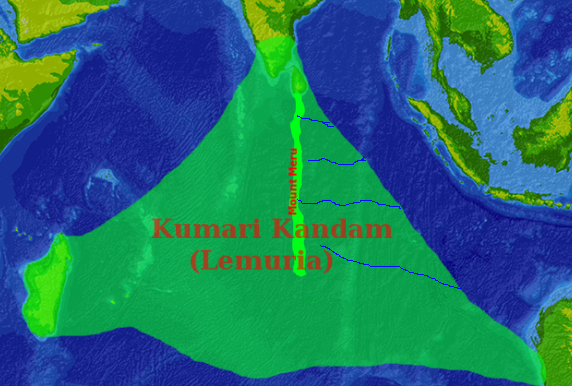Maya is the Architect of the Devas, Beings of a Higher Plane from the Humans.
They are called Devas, Indra being their Head.
Indian Philosophy, Religion and History are so intermingled that at times it is difficult for the reader to determine one from another.
One has to be cautious while evaluating them.
One such concept is the Devas.
Devas indicate a state of evolution of man where he ‘ she reaches higher in terms of perception and abilities.
It also indicates beings of a different plane of Existence.
It means a group of people on the earth as well.
Confirming the later there is the Amravathi city of Indra, the Chief of the Devas in Russia.
There is also the Rig Veda Mandala City as well.
Krishna’s son Pradhyumna built a city in Russia.
Siberians worship Ayur Devathas.
These are Dhanavas, excepting Pradhyumna who was a human being.(Dhanavas, Beings of a Higher Plane and living in area which was considered sacred)
The Rig Veda was composed in the Arctic,Shiva leading it, Vasishta , along with the other Rishis.
And the Mayas and Incas trace their origin to the Tamils.
Ravana was an Asura,meaning valorous.
The Asuras lived, in general, The Pathala Loka.
There is also the Nazca Lines of Peru resembling Shiva’s Trishul.
I had written about Shiva leaving the south and traveling through the western hemisphere,Europe, Americas before finally reaching the Arctic.
And Atlantis was there in the path.
‘Maya is a generic name for the people of sakadweepa.or Atlantis.In other words ,Maya,the yavanasilpi or architect of olden times was also a Magha Brahmin and who knew solar and lunar calendars and vaasthuvidya.
He was the one who built Indraprastha during Yudhishtira’s time and another of his race with the same generic name was the father of Mandodari .(Ravana’s wife).
He was an original inhabitant of sakadweepa(Atlantis)and he had come to live in present Rajasthan during Ravana’s time.
The word Asura and Azorus ,Atlantis and Atlantic ocean and Athalam of the scriptures are from the same root .
According to Sounakahora ,Maya was a astronomer of excellence and he taught astronomy to the great Rajarshi Viswamithra.
The original abode of Maya according to Indian scriptures is Romakapura in Athalam.
(The Romakapura spoken by the Mahgha Brahmin Varahamihira ,is this Romakapuram of Atlantis and not Rome.)
Romakasidhantha of Maya,the yavanaguru came from Atlantis and not Rome as the historians of Astronomy think.
The knowledge came to India in very very ancient times .
When Viswamithra accepted the southern stars as polestar there was a great debate between his disciples and disciples of Vasishta who followed the northern star clusters.’
Modern Delhi ,( portion of it) was called Indraprastha .
It was built by Maya.
Maya was from Sakadweepa.
Saka Dweepa was Atlantis.
More on Atlantis to follow.
Earth as Seven Islands.
King Priyavratha had seven sons each with names synonymous with Agni or fire God.The purana considers the world as 7 dweepa or islands belonging to these 7 Agni or fire,who were brothers.
Jambudweepa Agneendran
Plakshadweepa Idmadwajan
Salmali dweepa Yagnabahu
Kusadweepa Hiranyarethas
Krounchadweepa Grithaprishtan
Sakadweepam Methathithi
Pushkaradweepam Veethihothran
Jambu Asia Eurasia
Plaksham South America South America
Salmali Australia Australia
Kusa oceania oceania
Krouncha Africa Africa
Saka Europe Atlantis
Pushkaram North America North America
According to Blavatsky the Plaksha ,kusa ,salmali and Krouncha had been under the sea for a long time and surfaced again and Sakam which is at present submerged is the legendary lost Atlantis.
A part of sakadweep called the swethadweepa or white island(Shet land)is the present Greenland and parts of Siberia.
Bhavishyapurana says that swethadweepa lies beyond the salty sea and Magha Brahmins of this land had once built a sun temple for Sambha,the son o f Krishna and Jambavathy .(Varahamihira was adescendent of Magha Brahmins).
Jambavathy,the daughter of Jambavan,the oldest root race of inhabitants of the world(partly human and partly Riksha-the bear-ape man)was a south Indian wife of Krishna and belonged to the oldest Adivasi of the continent.
Thus ,the relation of Atlantean race and Indian race is mentioned in scriptures.
Citation.
http://www.online-literature.com/forums/entry.php?3455-Division-of-globe
There is a view that the Saka Dweepa was in the South west of the present India.
Related articles
Filed under: Hinduism Tagged: Atlantean Race, Atlantis, Atlantis in Hinduism, Indian Cosmology, Indian History, Indra, Indraprastha, Lake Baikal, Maya, Nazca Lines, New Delhi, Saka Dweepa

























































